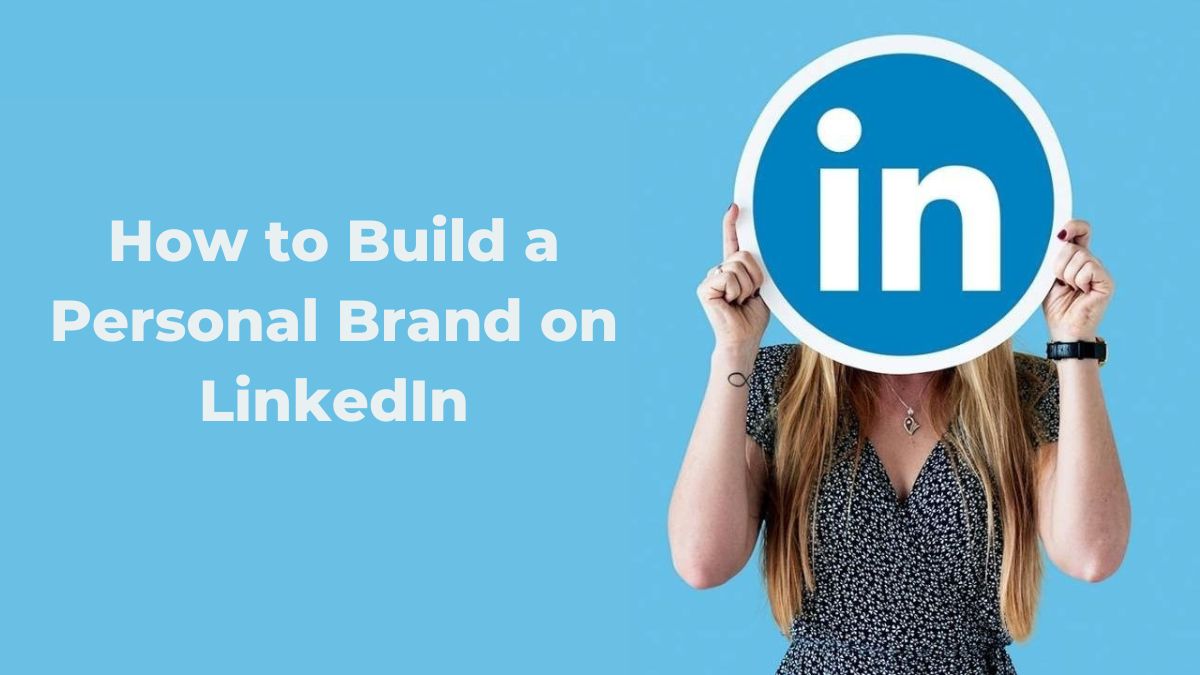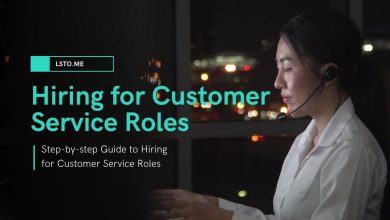
LinkedIn has evolved beyond just being a networking site. With over 900 million users, it has become the top social network for professionals to connect, share insights, and advance their careers. A strong LinkedIn personal brand can help build credibility, grow your network, and open new opportunities, whether you are a job seeker, entrepreneur, or industry expert.
This blog post will explore how to build a strong LinkedIn brand by optimizing your profile, engaging your audience, and creating valuable content.
1. Understanding the Importance of Personal Branding on LinkedIn
Before diving into the steps, it’s essential to understand why personal branding matters, especially on LinkedIn. Your personal brand is how you present yourself to the world, encompassing your skills, experiences, values, and what you stand for. On LinkedIn, a strong personal brand can help you:
- Increase Visibility: A well-crafted personal brand makes you more discoverable by recruiters, potential clients, and industry peers.
- Establish Authority: Sharing your expertise and insights on LinkedIn can position you as a thought leader in your industry.
- Build Trust: Consistent messaging and a professional online presence build trust with your network and potential collaborators.
- Advance Your Career: A strong personal brand can lead to job offers, speaking engagements, and other career opportunities.
Now, let’s dive into how you can build and enhance your personal brand on LinkedIn.
2. Optimize Your LinkedIn Profile
Your LinkedIn profile is the foundation of your personal brand. It’s often the first impression people have of you on the platform, so it’s crucial to make it count.
Profile Picture and Background Image
- Professional Profile Picture: Choose a high-quality, professional photo where you’re dressed appropriately for your industry. A clear headshot with a friendly, approachable expression works best.
- Custom Background Image: Use the background image to reinforce your personal brand. It could be an image related to your industry, your brand, or a graphic that represents your expertise or mission.
Headline
Your headline appears right below your name and is one of the most visible elements on your profile. Don’t just list your job title; use this space to showcase your unique value. For example, instead of “Marketing Manager,” use something like “Helping Businesses Grow via Data-Driven Marketing | Content Creator | Speaker.”
Summary (About Section)
Your summary is your opportunity to tell your story. Use this space to introduce yourself, highlight your key skills and experiences, and explain what drives you professionally. Keep it engaging and focused on how you can add value to others. A strong summary might include:
- A Brief Introduction: Who are you, and what do you do?
- Your Unique Value Proposition: What makes you different or uniquely qualified in your field?
- Career Highlights: Briefly mention key achievements, projects, or roles.
- Call to Action: Encourage visitors to connect with you or explore your content further.
Experience and Achievements
In the experience section, go beyond just listing your job responsibilities. Focus on your achievements and the impact you’ve had in each role. Use quantifiable metrics where possible (e.g., “Increased sales by 30% in six months”).
Skills and Endorsements
List the key skills that are relevant to your personal brand. Make sure these align with the skills you want to be known for. Encourage your connections to endorse these skills to add credibility to your profile.
Recommendations
Recommendations are social proof that can significantly boost your personal brand. Ask colleagues, clients, or supervisors for recommendations that highlight your skills, work ethic, and impact. A well-rounded set of recommendations will highlight different aspects of your expertise.
URL Customization
Customize your LinkedIn profile URL to include your name or brand name. This makes your profile easier to share and more memorable (e.g., linkedin.com/in/yourname).
3. Define Your Personal Brand
Building a personal brand requires clarity about what you want to be known for. Take the time to define your personal brand by considering the following questions:
- What Are Your Core Strengths? Identify the skills and knowledge areas that you excel in.
- What Are Your Passions? What topics or causes are you passionate about? These can help differentiate your brand.
- Who Is Your Target Audience? Consider who you want to reach on LinkedIn—industry peers, potential clients, recruiters, etc.
- What Are Your Career Goals? Your personal brand should align with your long-term career objectives.
After defining your brand, ensure that all your LinkedIn content reflects it. Consistency is key.
4. Create and Share Valuable Content
One of the best ways to build your LinkedIn brand is by sharing content that resonates with your audience. Content creation showcases your expertise, engages your network, and expands your reach.
Types of Content to Share
- Original Articles: Use LinkedIn’s publishing platform to write and share long-form articles. Share insights, case studies, or thought pieces on your industry.
- Status Updates: Share shorter posts, such as industry news, personal reflections, or quick tips. Use these updates to engage with your audience regularly.
- Multimedia Content: Share images, infographics, and videos. Visual content tends to perform well on LinkedIn.
- Curated Content: Share articles, reports, or news stories from other sources that are relevant to your audience. Add your commentary to provide additional value.
Content Strategy Tips
- Be Consistent: Regular posting helps you stay top of mind with your network. Aim to share content at least a few times a week.
- Engage with Your Audience: Respond to comments, ask questions, and start discussions to encourage interaction. Engaging with your audience builds relationships and increases content visibility.
- Use Hashtags: Incorporate relevant hashtags into your posts to increase discoverability. Use a mix of popular and niche hashtags related to your industry.
- Leverage LinkedIn Stories: Use LinkedIn Stories to share more personal, behind-the-scenes content. Show your daily work life, events, or quick updates.
5. Grow and Engage Your Network
A strong personal brand on LinkedIn isn’t just about who you are—it’s also about who you know. To expand your reach and influence, you must grow and engage your network.
Networking Tips
- Connect Strategically: Personalize your connection requests and explain why you’d like to connect. This increases the chances of acceptance and starts the relationship on a positive note.
- Join and Participate in Groups: Join relevant LinkedIn Groups and actively participate in discussions to network with like-minded professionals.
- Engage with Content: Regularly like, comment on, and share content from your connections. Meaningful interactions can strengthen relationships and keep you visible to your network.
- Attend LinkedIn Events: Participate in or host LinkedIn virtual events and webinars to connect with others and showcase your expertise.
Building Relationships
- Follow Up: After connecting with someone new, follow up with a message to start a conversation. This could be a thank-you note, a comment on something they’ve shared, or asuggestion to collaborate.
- Provide Value: Always look for ways to provide value to your connections, whether through sharing relevant content, offering advice, or making introductions.
- Be Authentic: Authenticity is key to building strong relationships. Be genuine in your interactions, and don’t be afraid to show your personality.
6. Monitor and Adjust Your Strategy
Building a personal brand on LinkedIn requires ongoing effort. Regularly review your performance and make adjustments as needed. Use LinkedIn’s analytics tools to track the performance of your content and engagement.
Key Metrics to Monitor
- Profile Views: Track how many people are viewing your profile. An increase in profile views indicates that your efforts are working.
- Post Engagement: Monitor likes, comments, and shares on your posts. High engagement shows that your content resonates with your audience.
- Connection Growth: Watch how quickly your network is growing. A steady increase suggests that your personal brand is attracting interest.
- Message Responses: If you’re actively networking, track the response rate to your messages and connection requests. Adjust your approach if needed to improve results.
Adjusting Your Strategy
- Experiment with Different Content: Focus more on content types that perform well and try new formats or topics to see what resonates best with your audience.
- Refine Your Messaging: Based on feedback and engagement, refine your headline, summary, and overall messaging to better align with your goals and audience.
- Stay Updated: Stay informed about new LinkedIn features, trends, and best practices to keep your strategy effective.
Conclusion
Building a personal brand on LinkedIn is a powerful way to network and unlock new opportunities. By optimizing your profile, defining your brand, creating valuable content, and engaging with your network, you can build a strong LinkedIn presence that reflects your expertise and values.
Remember, personal branding is an ongoing journey. Regularly assess and refine your strategy to ensure it aligns with your evolving career goals and identity. As you build your LinkedIn brand, be yourself, provide value to your network, and continue learning and adapting in the ever-changing digital landscape. With consistent effort, LinkedIn can become a cornerstone of your personal brand and a key driver of your career success.




